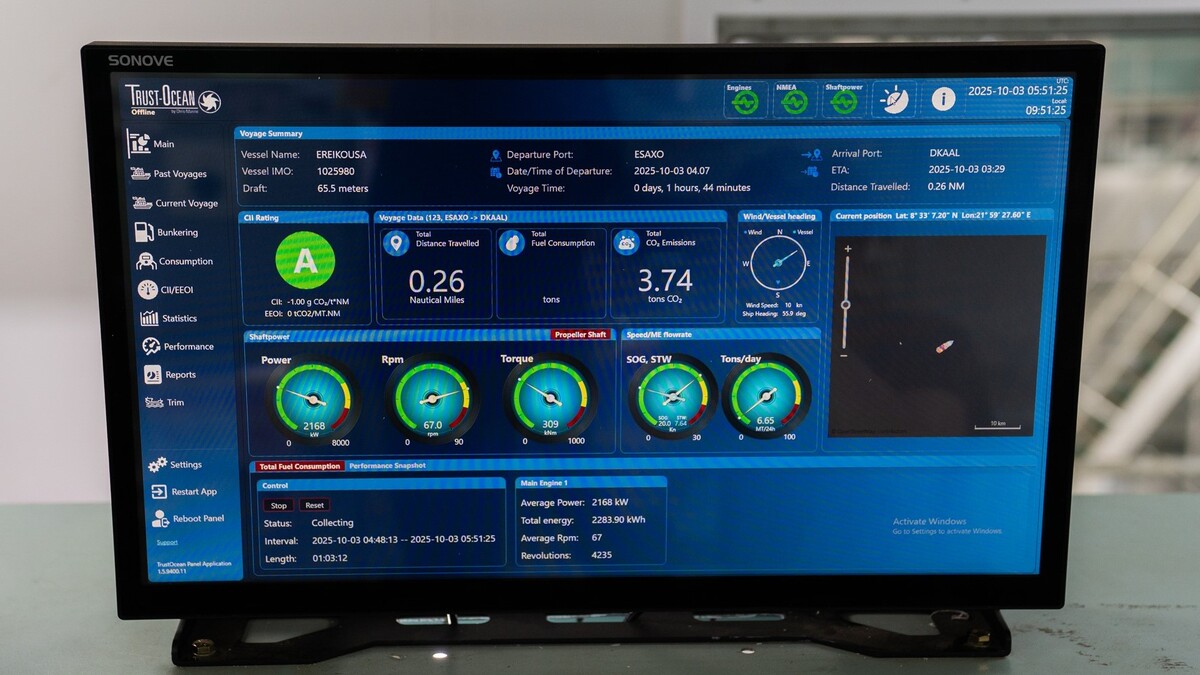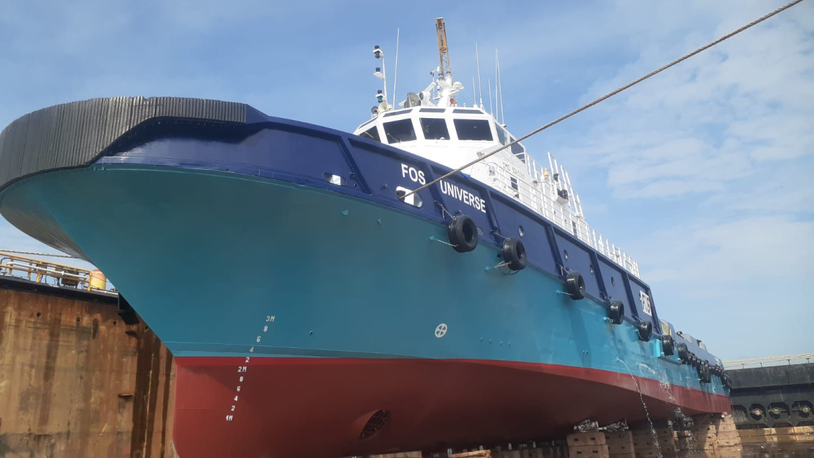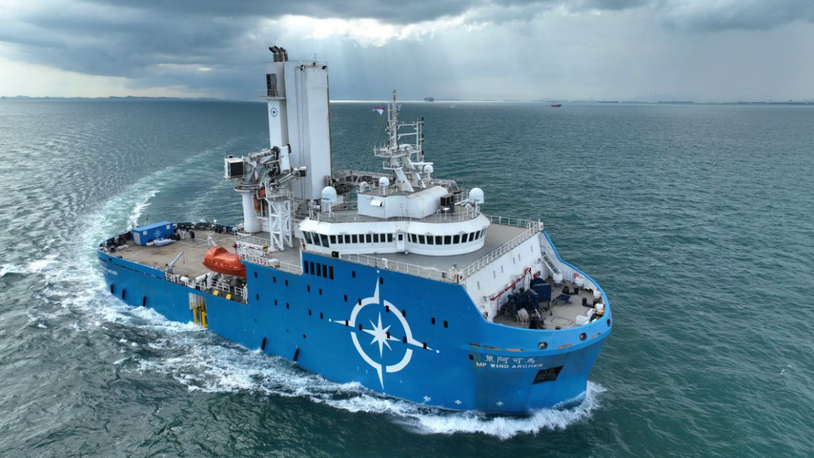Business Sectors
Events
Ship Recycling Webinar Week
Contents
Standby vessels: they also serve who stand and wait
Offshore shipping has been characterised by increasingly sophisticated newbuildings capable of undertaking tasks once confined to rigs. Drillships, well intervention and pipelaying vessels may perform essential, money-making tasks, but less glamourous vessels that provide standby support and emergency response and rescue capabilities also play an essential role.
Regulations for offshore structures in the North Sea and elsewhere require that standby and rescue vessels are available in case of emergency. The vessels may have no role beyond this but must be available at all times and maintain a round-the-clock listening watch on the rig or structure it is attending. Their role does not require them to be always in close proximity to a rig – in fact, it is recommended that they maintain a distance of just under a kilometre.
A secondary role as a guard vessel warning other shipping away from the rig increases their usefulness. Typically, a standby vessel’s crew will work 28 days on and 28 days off, thus a return to port for a crew change is a monthly requirement during which time a relief vessel will take over temporarily.
Operators are not as numerous as in the platform supply vessel (PSV) and larger offshore vessel sectors, but there are at least 10 operating in the UK Continental Shelf in the North Sea that are members of the Emergency Response and Rescue Vessel Association (ERRVA). These do not necessarily limit their operations to the North Sea.
Falling oil prices will inevitably put pressure on the operators of marginal fields, especially in the North Sea. There has already been some layoff of staff even by the oil majors, and it may well be that some fields will need to close. That, in turn, will impact on the operators of safety standby and support vessels and may lead to a cull of some vessels in their fleets.
Although support and emergency response vessels will need to be able to deal with some harsh conditions, their role is less demanding than that of a PSV or anchor-handling tug/supply vessel. Consequently, their earning capability is lower, which means vessels need to be simpler and have a longer working life than some other offshore types. This is highlighted by the number of vintage ex-fishing vessels that are still working today. Among the oldest vessels still operative are Rederei Groen’s Aurora G, GloMar’s Glomar Scout and Atlantic Offshore’s Ocean Swift – of 1950s vintage.
The presence of older vessels in the total standby and rescue fleet such as the three mentioned above does not mean that newer vessels are not represented. On the contrary, several designers and shipyards are active in the sector, and new vessels are being delivered and orders placed regularly. The members of ERRVA between them account for 18 of the 29 ships currently under construction or on order.
In April 2014, Vroon Offshore took delivery of VOS Fabulous – the first of a six-ship series of 50m emergency response and rescue vessels (ERRVs) being built at Nanjing East Star Shipbuilding in China. The second in the series – VOS Fairness – was handed over later in 2014, leaving the last four – VOS Faithful, VOS Famous, VOS Fantastic and VOS Fascination – to be delivered this year.
The Group B vessels are powered by two 820kW Caterpillar 3508C main engines each driving a controllable-pitch propeller. They have a rescue capacity for 300 people, accommodation is provided for a crew of 22 and there are a further 26 bunks and 66 seats for rescued personnel. Their emergency equipment comprises two rescue craft –a 15-person Delta Power Group daughter craft, featuring jet drives and two six-cylinder engines as well as single-point lift couplings, and a 15-person fast rescue craft (FRC). In addition, the ships have a Dacon scoop and a six-person rescue basket. For oil spills, they are equipped with two dispersant booms and a 5,000-litre dispersant capacity.
Vroon also has a four-ship series of larger Group A ERRVs being built at Fujian Southeast Shipyard. VOS Glamour was handed over at the end of last year, with the remaining three – VOS Grace, VOS Gorgeous and VOS Glory – scheduled for delivery this year. These larger vessels share the same wave-piercing bow shape of VOS Fabulous and its sisters and are equipped with the same type of daughter craft and FRC. They are 10m longer and 1.8m wider in the beam. Their larger size warrants more powerful engines, and the vessels are fitted with a pair of Caterpillar 3512 engines with a combined power output of 2,800kW.
Fujian is also building another four-ship series of very similar vessels for Sentinel Marine. These are 61m Group B vessels – the first of which, Fastnet Sentinel, was delivered in January and the second, Cygnus Sentinel, due for imminent delivery. When delivered, the second vessel will go on a five-year charter to GDF Suez E&P to support drilling operations in the Cygnus field.
Sentinel Marine also has a second series of Focal Marine and Offshore type 531 design 62m vessels being built at Cosco Dalian. The vessels are classed ABS Group B ERRVs and are designed to be easily upgraded to Group A. They will feature dynamic positioning, redundant of propulsion and thruster systems, enhanced cargo-carrying capabilities with 400m2 of usable deck space and advanced rescue and recovery equipment.
Craig Group subsidiary North Star Shipping took delivery last year of Grampian Dynamic and Grampian Dynasty – the first two of four IMT 950 types from the Balenciaga yard in Spain. The second two vessels and two larger IMT 958 types are due for delivery this year. The smaller vessels, to be dubbed D-Class, are 50m in length and will be outfitted as a minimum with one daughter craft and one FRC as well as state-of-the-art survival facilities. The two larger vessels will be called F-Class, are 8m longer and will be equipped with the same daughter craft and FRC. With regard to engines, the smaller vessel type is powered by a single MaK 8M20c engine, whereas the larger vessel has four Caterpillar C18 units to provide the motive power. The D-Class is also fitted with a single controllable-pitch propeller and fishtail rudder, while the F-Class has twin azimuth thrusters.
Series-built ships are popular with Danish operator Esvagt, which has AP Moller as its major shareholder. Almost half of its fleet of 39 vessels are the company’s C-type built by ASL Singapore. Since the first four of the 46m type were delivered in 2007, new ships have been arriving regularly. Last year, Esvagt took delivery of Esvagt Claudine and Esvagt Cornelia. Two more are scheduled for delivery this year. The Esvagt C-type vessels are classified as Group B vessels (up to 300 survivors) under UK rules. It also has approvals under Danish rules for 140 survivors and under Norwegian rules for up to 250 survivors.
Esvagt also has a trio of much larger multirole ERRVs built in Spain to the Ulstein X-BOW SX123 design. These 87m vessels were built between 2011 and 2012 and are equipped for fire fighting, oil recovery, tanker assist and supply services. They are powered by twin MaK 8M32C engines each producing 3,800kW and driven by twin controllable-pitch propellers.
Atlantic Offshore is another operator that has opted for larger, more sophisticated field support vessels having ordered three of the Havyard HY820 design with Spanish builder Zamakona, Two of these, Ocean Osprey and Ocean Marlin, have been delivered, with the final vessel, Ocean Falcon, due this year. The trio are categorised as Group A ERRVs, but they can undertake a range of activities and have a bollard pull of 65 tonnes. For rescue purposes, they are equipped with two MP1000 daughter craft and a Maritime Partner Weedo FRC. The power and propulsion systems comprise a pair of MAN 9L 21/31 engines, each producing 1,930kW, two main thrusters, a forward tunnel thruster and a retractable azimuth thruster.
Possibly the harshest conditions that ERRVs and support vessels will operate in will be experienced by a trio of ice-breaking ships ordered last August by Sovcomflot at Arctech Helsinki Shipyard – now Russian owned since the end of last year. The vessels, each valued at around US$127 million, will be built to Aker Arctic’s ARC 121 design, which is a development of the company’s ARC 105 PSV type. The ships will operate in the northeast Sakhalin offshore area where they will serve the operator of Sakhalin-2, Sakhalin Energy Investment Company (SEIC). They are scheduled for delivery between September 2016 and March 2017. They will be operating in thick drifting ice for ice management and ice breaking in temperatures down to -35°C. Their ice-breaking capability is extremely high as they are intended to be able to proceed independently in 1.5m thick ice.
The vessels are designed for standby and rescue duties and for oil spill recovery. They can also be used as supply vessels for cargo transfer and act as diving support vessels as they are outfitted with a moonpool. They measure 95m in length and 22m in beam and have a gross tonnage around 7,800 and a deadweight of 2,500 tonnes. Their four Wärtsilä gensets will have a combined total power of about 20,000kW. OSJ
Related to this Story
Events
Ship Recycling Webinar Week
International Bulk Shipping Conference 2025
Tankers 2030 Conference
Maritime Navigation Innovation Webinar Week
© 2024 Riviera Maritime Media Ltd.













